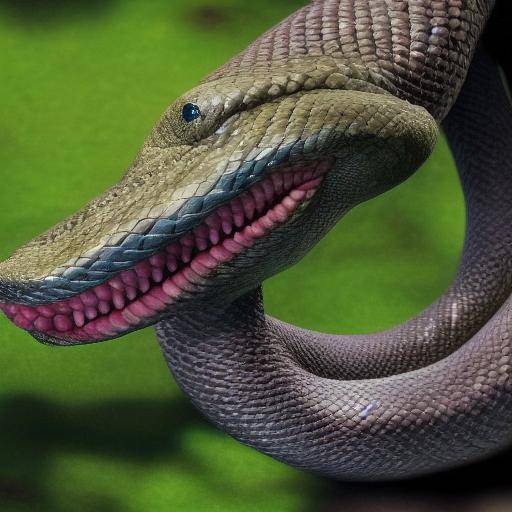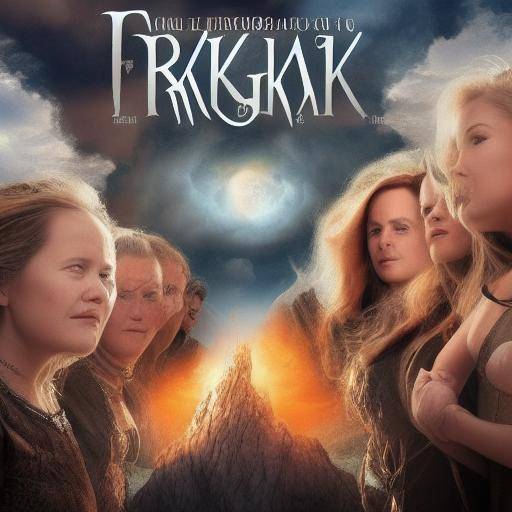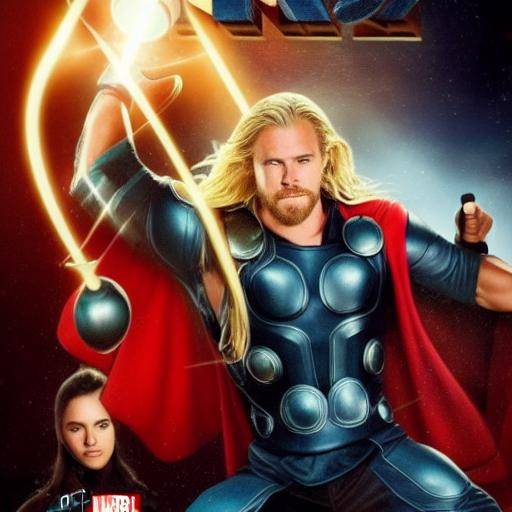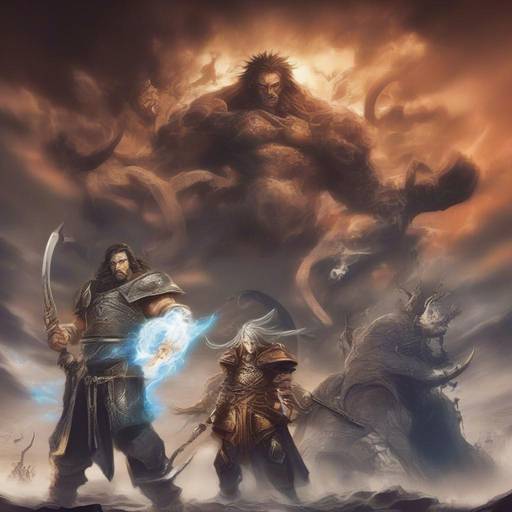
Introduction
The Nordic legends are full of myths and wonders, and one of the most fascinating characters is Jörmungandr, the Serpent of the World. This giant reptile, also known as the Midgard Serpent, plays a crucial role in the Nordic apocalypse known as Ragnarök. In this article, we will explore in depth the history of Ragnarök, the influence of the Thor god and the connection with the vast ocean. From its origins to its impact on Nordic mythology, we will discover the fascinating history behind these intertwined elements. In addition, we will provide practical advice, detailed analysis and reflections on the future of these topics. Join us on this journey through the rich Nordic mythology!
History and Background
The era of Ragnarök, the final destiny of the Nordic gods, has been a central theme in Scandinavian mythology since time immemorial. This apocalyptic event, prophesied to end the cycle of creation and give way to a new beginning, has captured the imagination of generations. The physical incarnation of this chaos is Jörmungandr, whose legend is intertwined with that of the brave god Thor.
The myth of Ragnarök foresees a series of catastrophic events that culminate in a cosmic confrontation between the divine forces and the powers of chaos. In this context, Jörmungandr emerges from the sea to face Thor, triggering a battle of cosmic proportions. The symbolic correlation between the ocean and Jörmungandr is undeniable, since the serpent is referred as "the serpent of the world" and describes it as the inhabitant of the vast oceans that surround Midgard, the world of human beings.
The figure of Thor, venerated as the god of thunder in Nordic mythology, plays a crucial role in prediction and preparation for Ragnarök. Its connection with Jörmungandr is unique, as it is considered its main antagonist in this final battle. The rivalry between Thor and Jörmungandr has become an eternal metaphor of the struggle between order and chaos, and its confrontation symbolizes the struggle for the very survival of the cosmos.
Analysis in Deep
The myth of Ragnarök and the inclusion of Jörmungandr as a catalyst of this apocalyptic event raise profound questions about destiny, resistance and renewal. The idea of a cosmic conflict and its multiple layers of meaning offer a rich source of reflection on the human condition and the role of natural forces in the universe.
Thor's importance as a defender of humanity and his confrontation with Jörmungandr resound beyond mythology, serving as a timeless reminder of the eternal struggle between order and chaos. This clash of opposing forces embodies a constant tension that has fascinated generations and inspired various artistic, literary and philosophical interpretations throughout the centuries.
The ocean, in its vastness and mystery, becomes a cosmic scenario that houses Jörmungandr and symbolizes a primordial force that lies beyond human control. Its role as a central component in the myth of Ragnarök offers a reflection on the relationship between humanity and natural elements, as well as on the very nature of existence. The connection between the ocean, Jörmungandr and the final destiny of the Nordic gods invites deep contemplation and exploration of the interconnection between the human being, the universe and the passage of time.
Exhaustive examination
The concepts of Ragnarök, Thor and the oceans bring with it a wealth of practical applications and a wide range of contemporary interpretations. Nordic lamitology continues to be a source of inspiration for literature, cinema, video games and other forms of artistic expression, leading to new interpretations and adaptations that keep this fascinating tradition alive.
Moreover, the influence of these elements in popular culture is undeniable. Over the years, Nordic myths have appeared in a variety of contexts, from Thor's performances in superhero films to Ragnarök's reinterpretations in contemporary literature. This adaptability and validity in modern culture demonstrate the perdurability and relevance of these topics beyond their original context.
Comparatively, Ragnarök, Thor and the oceans share a thematic focus on duality, the confrontation between opposing forces, and the cataclysmic potential that represents a cosmic reboot. Although each one possesses his own singularities, together they evoke an epic narrative that transcends temporal and cultural borders, finding echo in different contexts and generations.
Practical Tips and Accessible Tips
While the Nordic mythology may seem a distant theme, its relevance now resonates through the lessons and metaphors it offers. Some practical tips to address the theme of Ragnarök, Thor and the oceans include:
- Explore the literature and artistic representations that are inspired by Nordic mythology to gain a deeper understanding of their themes and symbolisms.
- Reflect on duality and conflict as fundamental elements of human experience, using Nordic mythology as a prism to examine these issues.
- Addressing the relationship between humanity and nature from the perspective of Nordic mythology, considering the role of the ocean as a symbol of primordial force and cosmic destiny.
- Recognize the adaptability of the Nordic myths in contemporary culture, exploring the various artistic and literary manifestations that reinterpret them for a current audience.
- Consider the philosophical and existential significance of the elements of Ragnarök, Thor and the oceans, seeking parallels in the challenges and transformations of modern life.
Industry ideas and Expert Reviews
In the world of literature and entertainment, it is not difficult to find examples of how Nordic mythology has influenced contemporary narrative. Authors, filmmakers and artists have resorted to these epic stories to build fictional universes that explore universal themes of struggle, triumph, and constant questioning of human condition.
The impact of Ragnarök, Thor and oceans in the world of entertainment and narrative offers a unique window to analyze the resilience of ancient myths in a modern context. Through the persistence of these themes in popular culture, it is evident that Nordic mythology continues to exert a significant influence on contemporary imagination and creativity.
Case Studies and Real Life Applications
An outstanding example of the influence of Nordic mythology on modern culture is the series of films based on the character of Thor, one of the most recognized superheroes in the Marvel universe. The adaptation of Nordic mythology in the genre of superheroes has led these ancient myths to new audiences around the world, reviving the interest in classic stories through a contemporary lens.
In addition, literary representations, such as the works of Neil Gaiman and other contemporary authors, offer a renewed vision of Nordic mythology, presenting these topics in an accessible and relevant way to the current public. The reinterpretation and reimagination of these myths demonstrate their ability to adapt to cultural and technological changes, while maintaining their relevance over time.
Future Trends and Predictions
As society continues to evolve, it is plausible that Nordic mythology continues to exert its influence on culture and creativity. With the advance of technology and the expansion of the media, new reinterpretations of Ragnarök, Thor and the oceans are likely to proliferate in different formats and platforms, reaching global audiences in surprising and innovative ways.
Moreover, the growing interest in mythology and ancient spirituality suggests that the relevance of these epic narratives will not fade soon. As future generations continue to seek connections with cultural roots and universal narratives, it is likely that Nordic mythology will remain an inexhaustible source of inspiration and reflection.
Conclusion
In short, the myth of Jörmungandr, Thor and the oceans in the context of Ragnarök offers us a unique window to explore the complexities of human condition and the interconnection between humanity, the cosmos and the natural elements. Through their rich history, timeless metaphors and their influence on contemporary culture, these themes continue to generate fascination and offer a renewed perspective on existence itself.
In reflecting on these elements, we not only discover a legacy rooted in antiquity, but also a narrative that continues to inspire and challenge present and future generations. The saga of Jörmungandr and his cosmic companions, Thor and the oceans, reminds us that some stories never lose their relevance, but continue to weave their influence eternally and omnipresently, as the threads of their own destiny.
Frequently asked questions
**1. What does the Jörmungandr snake represent in the Nordic mythology?**Jörmungandr represents a monstrous snake, known as the Serpent of the World, and is a central figure in the myth of Ragnarök. In this narrative, Jörmungandr plays a crucial role as antagonist of Thor in the final battle.
**2. What is the importance of Ragnarök's myth in Nordic mythology?**The myth of Ragnarök is fundamental in Nordic mythology, as it predicts the final destiny of the gods and the known world. This apocalyptic event marks the end of the current cycle of creation and the beginning of a new era.
**3. What is the relationship between Thor and Jörmungandr in Nordic mythology?**Thor, the thunder god, faces Jörmungandr in the final battle of Ragnarök. This confrontation symbolizes the struggle between order and chaos, as well as resistance against the forces of destiny.
**4. What symbolizes the ocean in Nordic mythology and its relationship with Jörmungandr?**The ocean is a symbol of vastness and mystery in Nordic mythology, and it is the home of Jörmungandr. The connection between the serpent and the ocean represents a primordial force beyond human control.
**5. How has Nordic mythology influenced contemporary culture?**Nordic mythology has influenced contemporary culture through various representations in literature, cinema, video games and other forms of entertainment. The adaptability and relevance of these themes in modern culture keep them in effect in the imagination of the current public.
**6. What is the relevance of the issues of Ragnarök, Thor and the oceans in today's society?**The themes of Ragnarök, Thor and the oceans offer a deep reflection on duality, cosmic struggle and the relationship between humanity and nature. These themes invite exploration of the human condition and the role of natural elements in the universe.
We conclude our journey through Nordic mythology, Ragnarök, Thor and the oceans with a deeper understanding of its lasting influence and its connection to human experience. As these stories continue to resonate in contemporary culture, their legacy remains alive, challenging and captivating new generations with their timeless metaphors and their universal impact.
Remember, these ancient narratives invite us to reflect on the depths of the cosmos, destiny and forces that shape our existence. Through heroic figures and cosmic clashes between order and chaos, we find a reflection of our own struggle, resistance and renewal. Thus, the saga of Jörmungandr, Thor and the oceans endure as an eternal testimony, reminding us that in the vastness of the universe, some stories never stop resonating.




